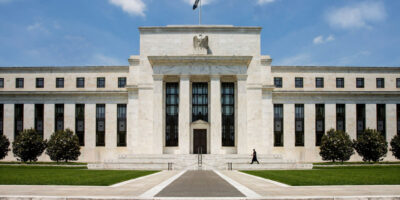Krugman and the Goldbugs
The announcement that President Trump would nominate Judy Shelton, a long-time advocate of the gold standard, for a seat on the Federal Reserve’s Board of Governors got Paul Krugman thinking: why do some economic commentators become goldbugs?
Krugman offers a rather cynical view. It is difficult “to build a successful career as a mainstream economist,” he writes.
Parroting orthodox views definitely won’t do it; you have to be technically proficient, and to have a really good career you must be seen as making important new contributions — innovative ways to think about economic issues and/or innovative ways to bring data to bear on those issues. And the truth is that not many people can pull this off: it requires a combination of deep knowledge of previous research and the ability to think differently.
So what’s an aspiring if not so smart or creative economist to do?
“Heterodoxy,” Krugman writes, “can itself be a careerist move.”
Everyone loves the idea of brave, independent thinkers whose brilliant insights are rejected by a hidebound establishment, only to be vindicated in the end. And such people do exist, in economics as in other fields.… But the sad truth is that the great majority of people who reject mainstream economics do so because they don’t understand it; and a fair number of these people don’t understand it because their salary depends on their not understanding it.
In other words, Krugman suggests most gold standard advocates are either ignorant or disingenuous — and, in some cases, both.
According to Krugman, “events of the past dozen years have only reinforced that consensus” view that “a return to the gold standard would be a bad idea.”
[T]he price of gold soared from 2007 to 2011; if gold-standard ideology had any truth to it, that would have been a harbinger of runaway inflation, and the Fed should have been raising interest rates to keep the dollar’s gold value constant. In fact, inflation never materialized, and an interest rate hike in the face of surging unemployment would have been a disaster.
Is that so?
Krugman commits two mistakes here. First, he implicitly assumes that the data-generating process for the dollar price of gold would have been the same if, over the period in question, the U.S. had been on a gold standard. Robert Lucas famously warned against such an assumption. The argument is straightforward. Individuals do the best they can given their institutional constraints. If those institutional constraints change, so too will the decisions individuals make and, hence, the data generated by those decisions.
Consider that many see gold as a hedge against inflation today. But there would be no scope for gold to serve as an inflation hedge under a gold standard. In other words, the decision to hold gold under a gold standard would be fundamentally different from the decision people face today.
The second error concerns Krugman’s characterization of the gold standard. The gold standard is not a system where the price of gold is fixed. Rather, it is a system where the dollar is defined as a particular weight of gold. Under a gold standard, the dollar price of gold cannot change because the dollar is gold.
Krugman’s mischaracterization of the gold standard as a system where the price of gold is fixed leads to a fundamental misunderstanding about how a gold standard operates. The gold standard does not require a central bank to raise or lower rates “to keep the dollar’s gold value constant,” as Krugman claims. Indeed, a central bank is wholly unnecessary.
Under a gold standard, the purchasing power of gold is determined by the ordinary forces of supply and demand. If the demand for gold coins increases, the purchasing power of gold will rise (i.e., dollar coins buy more goods and services). Miners respond to the higher purchasing power by digging up more gold and hauling it off to the mint to be coined. And, as the supply of monetary gold expands, the purchasing power gradually falls back to its long-run level. Likewise, if the demand for gold coins falls, less gold is mined and some existing coins are melted down and repurposed for nonmonetary ends. This automatic mechanism meant that the price level was much easier to forecast under the gold standard.
What about Krugman’s claim that the gold standard would have required contractionary monetary policy from 2007 to 2011, when many economists would have called for expansionary monetary policy? Wrong and wrong. It would not have called for any kind of policy — just individuals pursuing their own interests, as usual. And, since the purchasing power of gold was increasing over the period, it would have set in motion an expansion in the supply of money — not a contraction, as Krugman claims.
We won’t take issue with Krugman’s working model of the economics profession. No doubt many drift to unconventional views because they do not understand mainstream economics or find it in their interest to hold unconventional views. Advocacy of the gold standard, an unconventional view, is no exception.
Unlike Krugman, however, we do not believe the problem is limited to those holding unconventional views. Many economists have strong opinions about the gold standard. Few seem to understand how a gold standard functions and how such a system performed historically relative to modern fiat-money regimes. Krugman provides a case in point.














